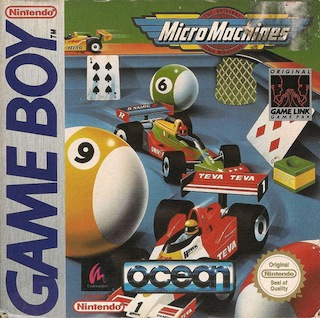Revenge of the Gator
1989 - HAL Labs

Kicking off this top 10 with a pinball game seems ludicrous. But when you consider both the Game Boy's purpose of being a portable gaming system and its actual size, you realize how hard it can be to transcribe into a handheld device a piece of hardware you can actually physically relate to.
But where the Game Boy lacks in realism (both in terms of visuals and physics) it makes up in gameplay, by introducing smooth animations and funky interactions that an actual pinball wouldn't be able to reproduce.
This game encompasses the Game Boy's ability to tell the player: "Those games you play in real life? Yeah, we got that covered too".








